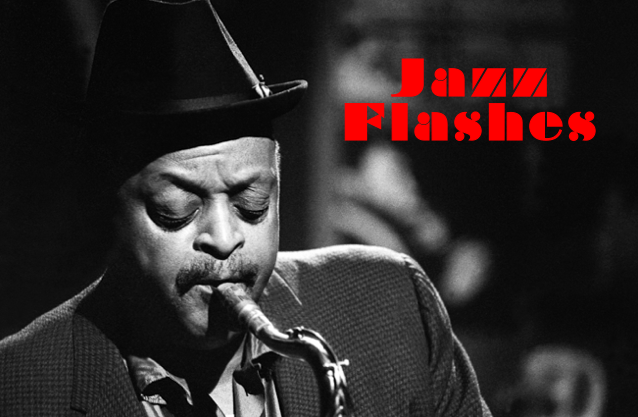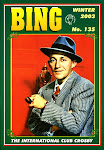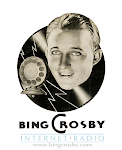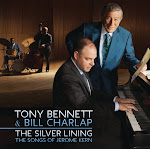Harrow's collection of Songbook and Beatles standards was recorded in New York City in 1989 and originally released in Japan the following year. On the two sessions that were needed to complete the album, the vocalist was accompanied by a group of fine musicians led by pianist Sir Roland Hanna and including Bill Easley (saxophone, flute, and clarinet), George Mraz (bass), Grady Tate (drums), and Turkish-American percussionist Arto Tunçboyaciyan. Produced by John Snyder, this project evolved out of a close collaboration between Harrow and Hanna, who encouraged the singer every step of the way and acted as musical director. Harrow is obviously on her home turf with the standards, some of which ("My Foolish Heart," "More Than You Know") are beautiful vocal-piano duets with Hanna. The usually haunting "Nature Boy" benefits from a great flute introduction by Easley, and Harrow's cabaret-like approach to "When the World Was Young" is very appropriate and turns that track into one of the most memorable on the set.
 |
| Drummer Grady Tate |
As soon as I heard of the reissue of The Beatles and Other Standards, I dropped Nancy Harrow a line, and she promptly and graciously responded, agreeing to an interview for The Vintage Bandstand. The following interview originated as part of our correspondence, and in it Harrow offers some interesting insights into the concept and the recording of this album.
Anton Garcia-Fernandez (for The Vintage Bandstand): How did you come up with the concept of a jazz album of Beatles songs and classic standards? What does the music of the Beatles have in common with the music of Johnny Mercer, Jerome Kern, and Vincent Youmans?
Nancy Harrow: I had recorded one Beatles tune before this album was done. It was on my Street of Dreams album that I did with Bob Brookmeyer, and the tune was "Fixing A Hole." It came out very well, and in fact that tune became part of my working repertoire. So I began to listen to more of the Beatles tunes which I knew from my sons' record collection. I liked their lyrics and the humor in a lot of the songs, and it occurred to me to pair the tunes with known standards to show that they should be considered part of the standard songbook that jazz musicians draw on. At that time many jazz musicians were openly hostile to the Beatles' music, I think because they were putting them out of business. In any case, it was difficult to persuade musicians I knew to do an album like the one I envisioned. But Roland Hanna was not judgmental about anything in music, and he agreed to do the album with me.
TVB: How did you select the songs for the album? Was it a difficult process?
Ms. Harrow: I selected the songs in the same way I always select songs. I look for lyrics that are meaningful to me and for melodies that linger in the mind.
TVB: What aspects did you find challenging as you adapted these songs by Lennon, McCartney, and Harrison? Did you approach the standards and the Beatles tunes differently?
Ms. Harrow: The standards came more naturally to me, but the Beatles tunes were a challenge to sing in my own style rather than in theirs. And this was made much easier for me because Roland was playing them. The way we did them evolved during our rehearsal sessions.
 |
| Pianist Sir Roland Hanna |
Ms. Harrow: I remember our rehearsal sessions even more than the recording session. Roland was in a Broadway musical at the time, and we were rehearsing somewhere near the theatre because his time was limited. I particularly remember his influence when we were rehearsing "Drive My Car," because we were both amused by the humor of this tune, and Roland suggested I say "and maybe I'll luhve you" -- not sure you can get this from my spelling, but you can hear it on the CD. At the session, I remember Grady's suggestions about improvising on the lyric, which were helpful to me. This was the first of many albums I did with both Roland and Grady together. I also worked with Bill Easley and George Mraz on other projects, and did a club date with Arto Tunçboyacian afterwards. They are all great musicians, and I'm so glad this CD is now reaching audiences outside of Japan.
 |
| Bassist George Mraz |
Ms. Harrow: John Snyder was the producer of this album, but it proved to be a difficult sell to record companies in the U.S. I sent it to a record company in Japan who had released other CDs of mine, and they took it right away. It turned out to be quite successful in Japan, and actually has had two releases there. But no one until now has reissued it and distributed it worldwide. I am so glad that Jordi Pujol [owner of Fresh Sound Records] has done that, because there are several songs on the CD that are among my favorite recordings. I like the duets with Roland on "My Foolish Heart" and "More Than You Know" (Roland has a great solo on that tune), and I like "Drive My Car" and "When the World Was Young." Roland's arrangement of "Yesterday" I think is terrific. So I am very pleased it is finding a wider audience at last.
TVB: In your opinion, what is appealing to Japanese audiences about jazz? What is special to you about performing in Japan?
Ms. Harrow: The Japanese audiences are amazing. I didn't actually perform there when this CD came out. But in 2006, 2007, and 2008 I had club dates and a concert in Japan, and they did a Japanese version of my puppet show, Maya the Bee, which toured for two years in Japan. The audiences there are so warm and welcoming -- it was a unique and wonderful experience to be there.
TVB: The European label Fresh Sound Records, of Barcelona, Spain, has shown interest in reissuing your work. A few years ago they released two of your 1960s albums, the excellent Wild Women Don't Have the Blues and You Never Know. Are there any plans for further releases in the near future?
Ms. Harrow: It was a surprise when Fresh Sound in Barcelona reissued my first two albums in one CD. I didn't realize that in Europe the CDs become public domain after fifty years. But it was such a pleasant surprise, because they did such a beautiful job on the CDs. I just met Jordi Pujol a few weeks ago when I was in Barcelona. We had only corresponded before that. I am so happy to have found a new home for my early CDs, and now this Beatles album. The next one they will release is The John Lewis Album for Nancy Harrow, which will be done very soon. And there are plans ahead to do my Street of Dreams album as well, which has gone out of print. So this is a very happy new relationship.
Further information
 |
| Nancy Harrow in the studio in the 1960s with John Lewis amd Jim Hall (photo originally published in JazzWax) |


































